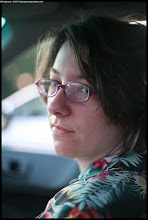by James Goss
The Doctor (the fourth incarnation), with Romana (the second) and K-9 (Mark II) in tow, heads for the end of the world again. Romana is somewhat miffed to discover this involves attending a cricket match at Lord's Cricket Ground--one of the more spectacular examples of humanity's collective bad taste, made even more distressing by the fact that the humans have no idea. But when the Doctor attempts to confiscate the trophy for the good of the universe, only to see it stolen by killer robots no one has seen in several millennia, he and Romana have to set out on another quest to collect the pieces of a key, this time one that could be used to release the most murderous xenophobes in all of galactic history to continue their ancient mission to wipe out the rest of the physical universe.
In this quest, the Doctor and Romana fail. But they do start to realize that some of the recorded details of galactic history, and even the memory Matrix of the Time Lords, don't quite add up. Why was the planet Krikkit so very isolated in the first place? Where did the wrecked spaceship that shattered their isolation come from? How did they achieve the capacity to travel in space and wage interstellar war so quickly? Who could be behind it all--and could there be someone behind them?
Sounds familiar, I know. We thought we knew about Krikkit: It was the failed pitch for a Doctor Who story that Douglas Adams, a lifelong inveterate repurposer of his own ideas, reworked into Life, the Universe, and Everything, the third Hitchhikers novel, the first one not based directly on the radio series, and the one that (I now think) holds up best as a coherent novel (for some definitions of coherent, anyway). Little did we know that before that happened, Adams had spent four years working on the idea as a script for a proposed Doctor Who movie, and he left enough material in his papers for James Goss's novelization of that version to hold up pretty well too.
The two novels start and end in more or less the same place (at Lord's, naturally), but they take very different paths to get from one end to the other. As they would have to, considering that Ford Prefect was originally conceived as the Anti-Doctor--the hyper-knowledgeable alien character who, given the choice between saving the universe and sloping off to a party, will choose the party every time--and Arthur Dent, while well-meaning and (as a later Doctor would observe) a nice man, is rarely depicted as competent at much of anything--though in this novel he does at least manage to learn to fly, and figures out exactly how to get rid of an angry Thunder God. The Doctor and Romana are much more active protagonists than Ford and Arthur ever manage to be; indeed, the Doctor's role in Krikkitmen is mostly assigned to Slartibartfast and Trillian in LtU&E, with Arthur and Ford tagging along in varying degrees of reluctance and haplessness--though Arthur does get his moment on the pitch at the end.
So even if you think you've read this story and you know where the plot is going, Doctor Who and the Krikkitmen is still well worth a read. Only a few scenes are essentially the same, the whole central quest narrative is completely different, and even the ending had a surprise in store.
Monday, May 27, 2019
Doctor Who and the Krikkitmen
Subscribe to:
Post Comments (Atom)



No comments:
Post a Comment